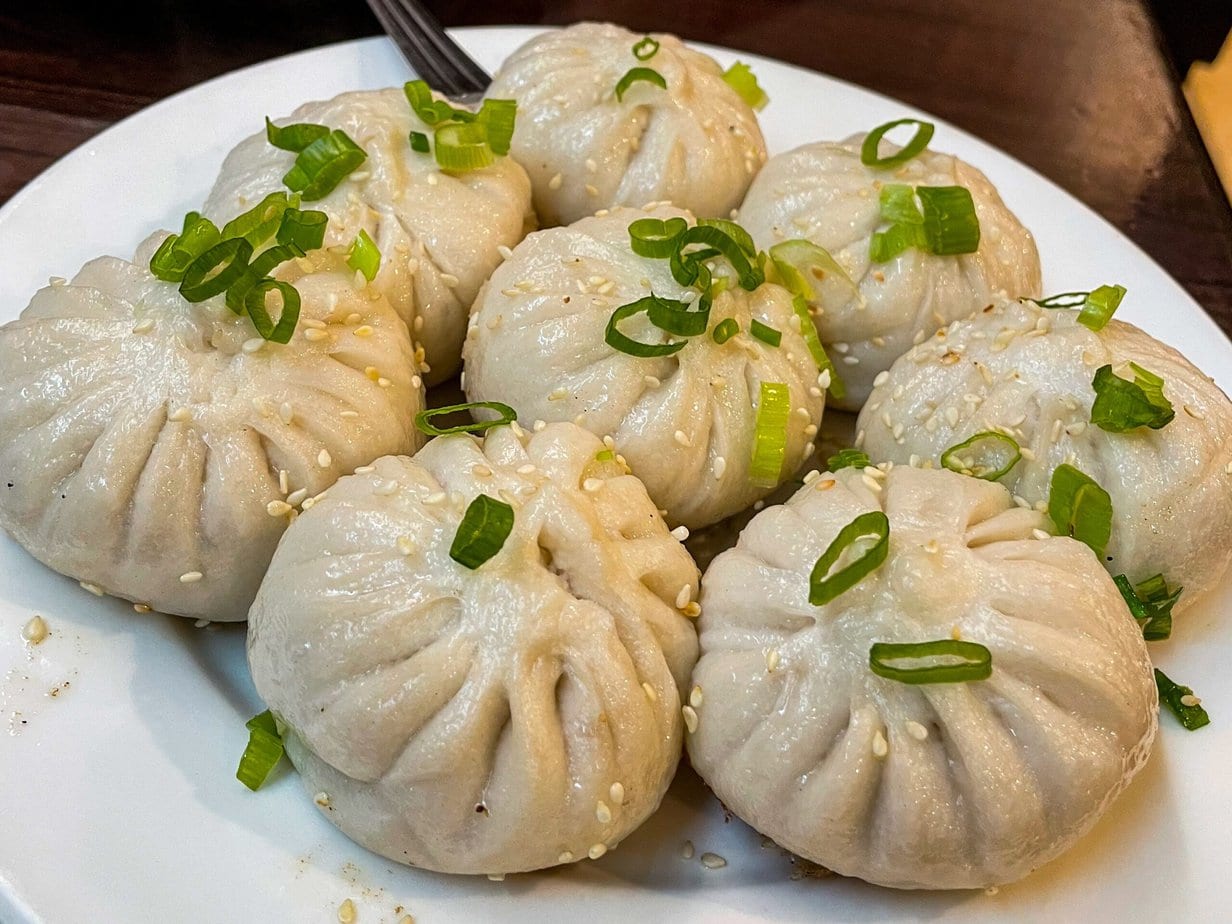
Sheng Jian Bao: Shanghai Pan-Fried Soup Buns
An authentic Sheng Jian Bao recipe that brings the sizzle of Shanghai street stalls straight to your kitchen.
Print Recipe
Pinner la recette
Servings: 6 Baos
Calories: 205kcal
Ingredients
Homemade Pork Aspic
- 100 g pork skin (rind)
- 400 ml water
- 1 small knob of ginger
- 2 scallions
- 2 pinches salt
- 1 pinch MSG (optional)
Dough
- 400 g all-purpose flour
- 2 g instant dry yeast
- 230 ml water
- 1 teaspoon sugar
Filling
- 300 g ground pork
- 200 g pork aspic
- 1 tablespoon chopped green onion
- 1 teaspoon finely minced ginger
- 150 ml water
- 1.5 teaspoon salt
- 2 teaspoon sugar
- 1 tablespoon sesame oil
- 1 tablespoon Shaoxing wine
- 2 teaspoons cornstarch
- 1 teaspoon Sichuan peppercorns
Toppings
- black sesame seeds
- chopped green onion
Procédé
Make the Pork Aspic
- If needed, singe off any stray hairs from the pork skin.100 g pork skin (rind)
- Slice the skin into thin strips.
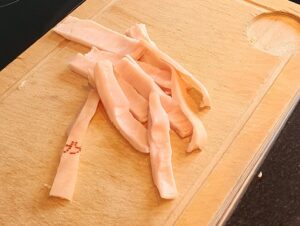
- Combine all the aspic ingredients in a saucepan and simmer over low heat for about 40 minutes.400 ml water, 1 small knob of ginger, 2 scallions, 2 pinches salt, 1 pinch MSG (optional)
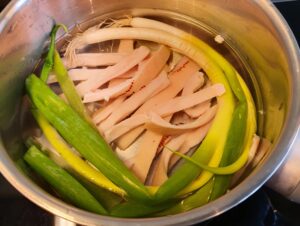
- During cooking, try to keep the skin-to-water ratio close to 1:4. If the liquid reduces too much, top it up with a splash of water.
- When done, discard the scallion and ginger, then transfer the skin and broth to a blender and blitz on high speed.
- Return the mixture to the saucepan, simmer for 3–5 minutes more, then pour it into a glass container.
- Refrigerate the aspic until fully set.
Make the Dough
- In a bowl, whisk the yeast and sugar into the flour.2 g instant dry yeast, 400 g all-purpose flour
- Gradually pour in the water while stirring.230 ml water
- Knead until the dough is smooth, cover with plastic wrap, and let it rest at room temperature for 20–30 minutes.
- When the dough has slightly risen, poke it gently; if the indentation bounces back slowly, it's ready to go into the fridge.
Make the Filling
- Combine the water, ginger, Sichuan peppercorns, and green onion in a bowl and let them steep for 15 minutes.1 tablespoon chopped green onion, 1 teaspoon finely minced ginger, 150 ml water, 1 teaspoon Sichuan peppercorns
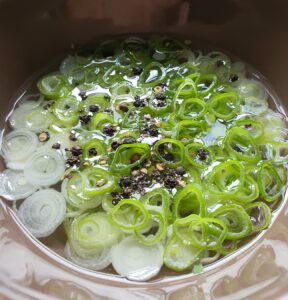
- In a separate large bowl, mix all the remaining filling ingredients except the pork aspic. Stir in one direction for about 3 minutes.1 teaspoon sugar, 300 g ground pork, 1.5 teaspoon salt, 2 teaspoon sugar, 1 tablespoon sesame oil, 1 tablespoon Shaoxing wine, 2 teaspoons cornstarch
- Strain out and discard the aromatics, then gradually drizzle the infused water into the filling while stirring.
- Stir until the mixture turns sticky and almost paste-like.
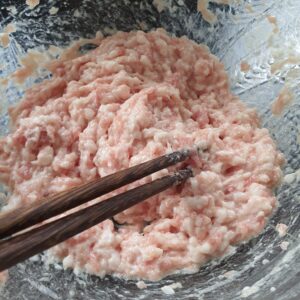
- Remove the chilled pork aspic from the fridge and finely dice it.200 g pork aspic
- Fold the aspic into the meat mixture, then refrigerate for at least 15 minutes.
Shape the Buns
- Lightly flatten the dough with your palm.
- Fold it into a rectangle, then roll it out with a rolling pin.
- Roll the dough into a long log.
- Cut the log into bite-sized pieces, about 13–15 g each, and dust them with flour to prevent sticking.
- Lightly oil a pan and set it aside.
- Press each dough piece flat, then roll out the edges with a rolling pin while rotating the dough so the center stays slightly thicker.
- Spoon a little filling into the center of each wrapper.
- Gather the edges, pleat, and pinch firmly to seal.
- Double-check the seal so no broth can escape.
Cooking
- Set the buns in the hot pan, pleat side down, and pan-fry over medium heat for 1–2 minutes until golden.
- Pour in enough water to come halfway up the sides of the buns.
- Cover, reduce the heat, and steam-fry for 8–10 minutes.
- Once the water has evaporated and you hear a gentle sizzle, turn off the heat and scatter over the chopped green onion and black sesame seeds.chopped green onion, black sesame seeds
- Cover again and let the buns rest for 1 minute before serving.
Notes
I don’t have a blender—what can I do about the aspic?
No problem. Use a 1:2 ratio instead (200 ml water to 100 g skin) and simmer for about 1 hour 30 minutes, or until tender.
The buns will puff slightly as they cook, so leave a little space between them in the pan.
Hold off on flipping until the bottoms are deeply golden.
Because this dough uses a semi-fermented method, it won’t rise as much as regular steamed-bun dough—that’s exactly what gives Sheng Jian Bao their signature chew.
When the aspic melts it becomes a delicious, but piping-hot, soup—beware of that first bite!
Nutrition
Calories: 205kcal | Féculents: 27g | Protein: 8g | Fat: 7g | Saturated Fat: 2g | Polyunsaturated Fat: 1g | Monounsaturated Fat: 3g | Cholesterol: 18mg | Sodium: 308mg | Potassium: 115mg | Fiber: 1g | Sugar: 1g | Vitamin A: 22IU | Vitamin C: 1mg | Calcium: 12mg | Iron: 2mg
As-tu réalisé cette recette ?Tague @marcwiner sur Instagram !